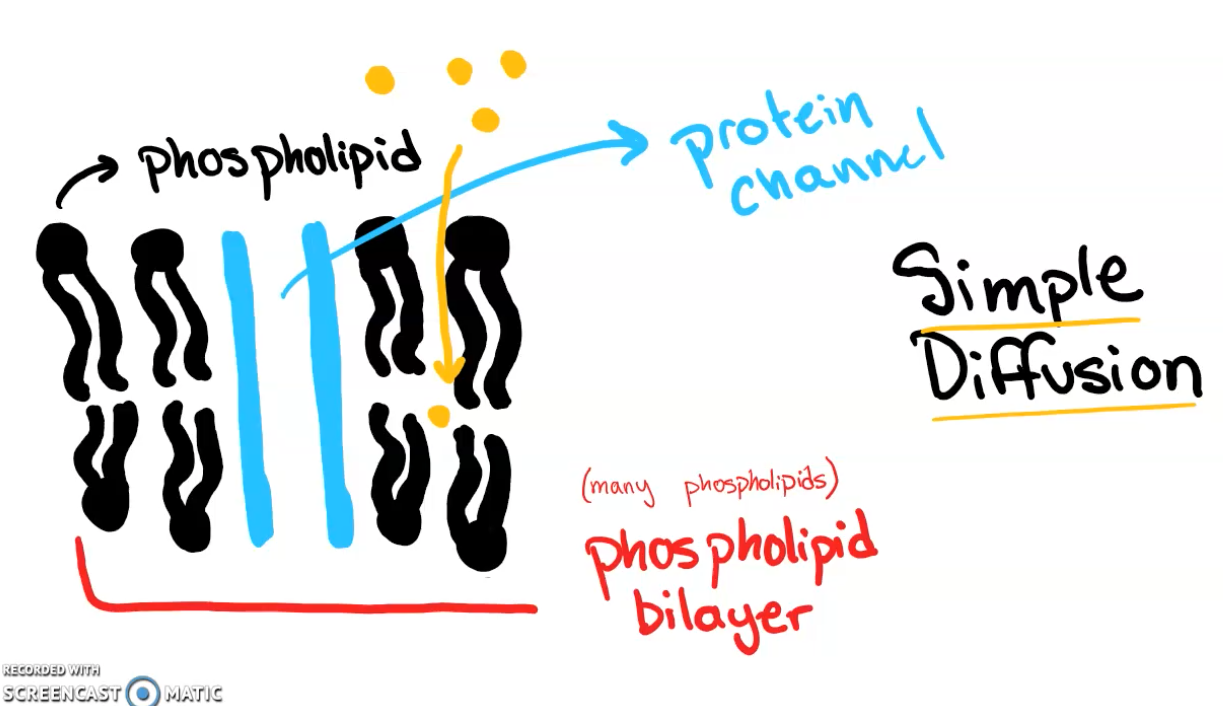How much do you really know about cell transport? How does oxygen move from your lungs to your muscles? MICDS 10th grade science students recently found out during their unit on cell transport. To assess their understanding of these concepts in an alternate format, students created a model (physical or digital) of the cell membrane. They used their model to make a video demonstrating three different types of cell transport.
Simple Diffusion is how molecules move from an area of high concentration to a place of low concentration without the assistance of proteins or other materials to pass through the membrane. One student remarked that it’s like a “beaded curtain” wiggling back and forth to make it easy for gases such as carbon dioxide and oxygen to move between cells.
Facilitated Diffusion is when molecules move from high to low concentration areas and need the help of carrier proteins through a protein channel. This process happens with larger molecules such as glucose, amino acids, and nitrogen.
Active Transport happens when molecules have to travel from low to high concentrations, so they need an energy source to open the channel and move them through. An excellent example of this is when ions from soil travel into the roots of a plant.
Students appreciated the opportunity to demonstrate what they learned in a new format of assessment.
“By completing this assignment, I felt like I truly understand the different forms of transport. I wanted to make sure the information I was stating was accurate, and this made me look at the types of transport in a new way to learn them properly. As being able to explain a complex idea to another person is a sign of truly knowing it, I found this assignment to be extremely beneficial.” – Lauren Bell ’23
“I enjoyed how this project brought together my understanding of cell transport and connected my knowledge of all three transport types. It was very effective in helping me initiate my own learning.” – Ella Chamberlain ’23
“I thoroughly enjoyed this project because it allowed me to expand my knowledge on cell transport in a personal way. I was able to take what I knew and form a video in my own way to display my understanding, which was amazing!” – Layla Daud ’23
“I particularly enjoyed the assignment because I had never before used Screencast-O-Matic, the video software in which I created my video. I really might consider using the program again for other video-based projects, especially with everything online at the moment. In particular to science, I learned more about cell transport and the different types of processes in a more individualized way, which I found more fun compared to a lecture or notes set.” – Noah Macam ’23
Upper School Science Teacher Kelly Anderson shared, “This was a great way for students to show what they know, while also building their skills and creativity in creating a model and sharing information in a different medium.”
The next time you exercise or take a deep breath, feel your cells transporting oxygen via simple diffusion!
